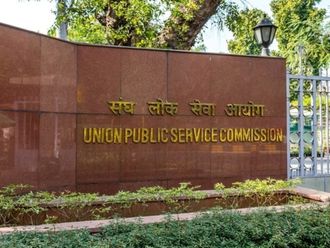On Tuesday, Tunisian President Beji Qaid Essebsi addressed the nation. His audience, still reeling from last week’s brazen terrorist attack in the heart of Tunis, expected to hear him discuss the security situation. And he did - but only briefly. He quickly moved on to a rumination about the internal conflicts within-Nidaa Tounes, the ruling party that Essebsi himself founded three years ago in the aftermath of the revolution that toppled President Zine Al Abidine Bin Ali.
His decision to dwell on the topic wasn’t entirely surprising. On November 9, just days before the latest terrorist attack, Tunisia’s nascent democracy was plunged into crisis by the announcement that 31 of the ruling party’s legislators were resigning from its parliamentary bloc, thus stripping Nidaa Tounes of its governing majority. (The parliamentarians have since backed away from that decision, but continue to threaten that they may resign if their demands are not met.)
Essebsi bemoaned the turmoil in dramatic terms: “It seems that there’s a current crisis, a crisis of leadership,” he said. “It seems that conflict has led to a dead end.”
One year ago, Tunisians chose the first democratically elected parliament in their history, and a majority of them chose to put Nidaa Tounes in the driver’s seat. That election marked a dramatic shift in the country’s nascent democratic culture. After the popular uprising of 2011, Tunisians had first gone to the polls to pick the members of the National Constituent Assembly, which was tasked with drawing up a new constitution. Though envisioned as an interim body, the NCA ended up effectively serving as the national legislature for three years. It was dominated by the Islamist Al Nahda Party, which held the majority of seats in coalition with two other non-Islamist parties. Together they were known as “the Troika.” But in 2014, when Tunisians finally had the chance to vote directly for their national parliament, most turned to Nidaa Tounes.
Essebsi had founded the party in 2012 specifically to counter “the lack of balance in the political scene” (as the party’s founding statement put it). A long-time fixture of Tunisian politics, Essebsi had spent-five years as foreign minister in the 1980s under the old regime of President Habib Bourguiba. After the 2011 revolution, Essebsi served as a placeholder prime minister for a few months before finally opting to create his own political vehicle. Wary of the Islamists’ political dominance, he envisioned his new party as a home for all those who wanted to preserve the country’s secular institutions: miscellaneous leftists, followers of the Socialist Destourian Party of former President Habib Bourguiba, and even some members of the old regime. The party’s members shared neither an ideology nor a specific economic program. They were united solely by their opposition to the ruling coalition.
Now the party’s inherent fragility has been exposed for all to see. It has essentially split into two camps: one led by Essebsi’s son, Hafedh Qaid Essebsi, and another - which includes the resigning lawmakers - which opposes what it sees as the anti-democratic tendencies of party leaders who were close-to the Bin Ali regime.
The problem, according to these critics, is that Nidaa Tounes is full of veterans of Tunisia’s old ruling party, the Democratic Constitutional Party (RCD). Under Bin Ali’s rule, there was no political pluralism, and the ruling party was the only one that mattered. Rather like the communist parties in the old Soviet bloc, the RCD fused with the state. Where a particular person stood in the RCD determined his or her eligibility for government positions; over the years, ideology gave way to careerism.
So it comes as little surprise that Nidaa Tounes turned out to lack a clear ideological basis. At the time of its creation, simply being anti-Islamist (or anti-Troika) was enough. Nidaa Tounes presented itself as the “other choice” for those who were dissatisfied with the performance of the Troika-led government - and it called on citizens to vote for them as a way of preventing the Islamist Ennahdha and its allies from winning again.
The strategy worked. Nidaa Tounes won last year’s election, and its founder and leader, Essebsi, was also elected as president. Essebsi, indeed, was the glue that held the party together. But there was a problem: motivated in part by the disastrous merging of the party and state in the old regime, the post-revolutionary constitution requires the president to stand above party politics. That meant that Essebsi had to resign from Nidaa Tounes as soon as he assumed office. Almost immediately, the party’s internal fissures began to widen, and soon it was falling apart as quickly as it arose.
If the 31 parliamentarians do end up leaving the Nidaa Tounes parliamentary bloc, the Islamists would end up with-a majority. The dissident faction in the party, which is led by Mohsen Marzouk, has been deliberating whether to make this final move. On November 30, Marzouk spoke of making a decision “that could be painful but necessary.” At the core of the dispute lies an argument about who should control the party, fueled by bickering over how to divide up government appointments and other spoils of power. All of this, of course, is aggravated by the stark fact that the people involved share little in the way of ideology.
Entirely aside from the crisis within the ruling party, President Essebsi’s speech-raises questions about the extent to which the state and the ruling party really are separate. Although he did say himself that the constitution prevents his direct involvement in any parties, he declared the internal within Nidaa Tounes to be a matter of “national interest.” It seems that the structure of Tunisian political life is still permeated by old totalitarian habits.
— Foreign Policy/The New York Times Syndicate
Farah Samti is a journalist based in Tunis, Tunisia. She has been covering Tunisia’s transition since 2011. She has also been published in the New York Times.








